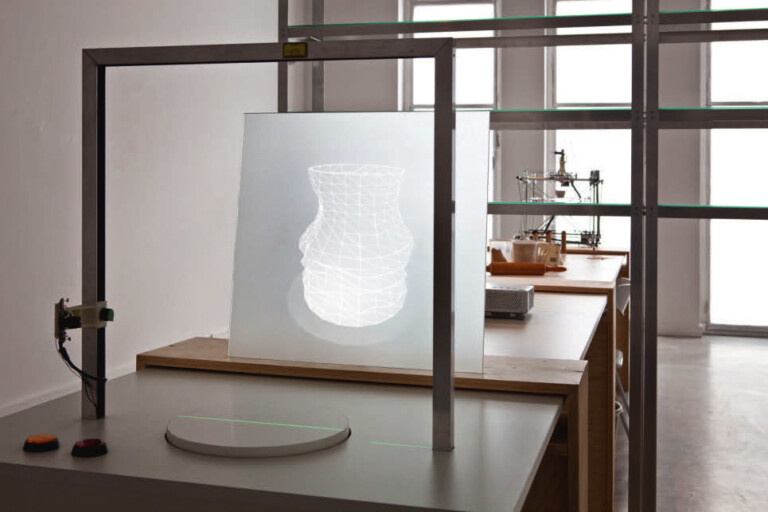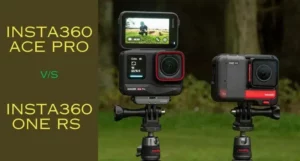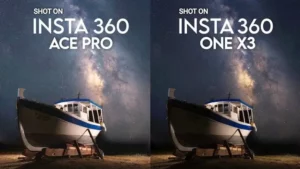Belgian design studio Unfold, founded in 2002 by Claire Warnier and Dries Verbruggen, investigates the new territories created by the convergence of analog and digital processes. Warner and Verbruggen, both Design Academy Eindhoven graduates, explore the apparently contradictory relationship between heritage and technological innovation. ‘Craftsmen used to have a lot of control over their tools and processes; industrial designers have lost a lot of this influence,’ says Verbruggen. ‘In our projects, we play with the notion of control. We allow a lot of room for errors and play. We also open-source some of our processes: this is a way of losing control over something in order to gain something else.’
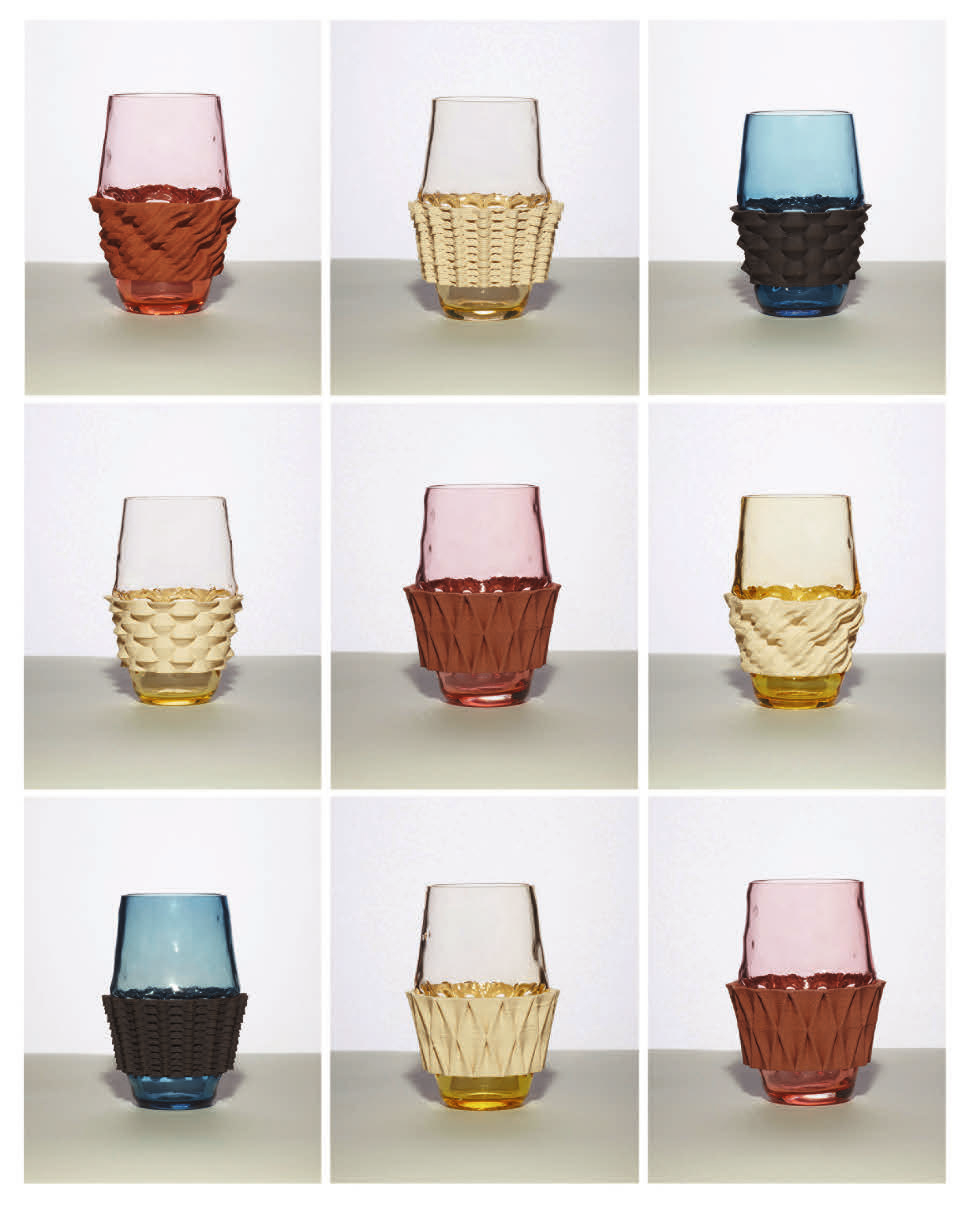
For the Skafaldo project, Warner and Verbruggen partnered 3D-printing services provider Materialise to explore the visual potential of the computer-generated structures that support objects while they are being 3D-printed. The structures are usually discarded. ‘These structures are the black sheep of 3D printing, but we were intrigued by their beauty,’ explains Verbruggen. ‘They are developed by software engineers, but at the same time have an aesthetic that connects with industrial buildings.’ The Transaction Project, developed in collaboration with researcher Charles Stern and classically trained ceramist Jonathan Keep, experiments with the combination of craft heritage and digital technologies.
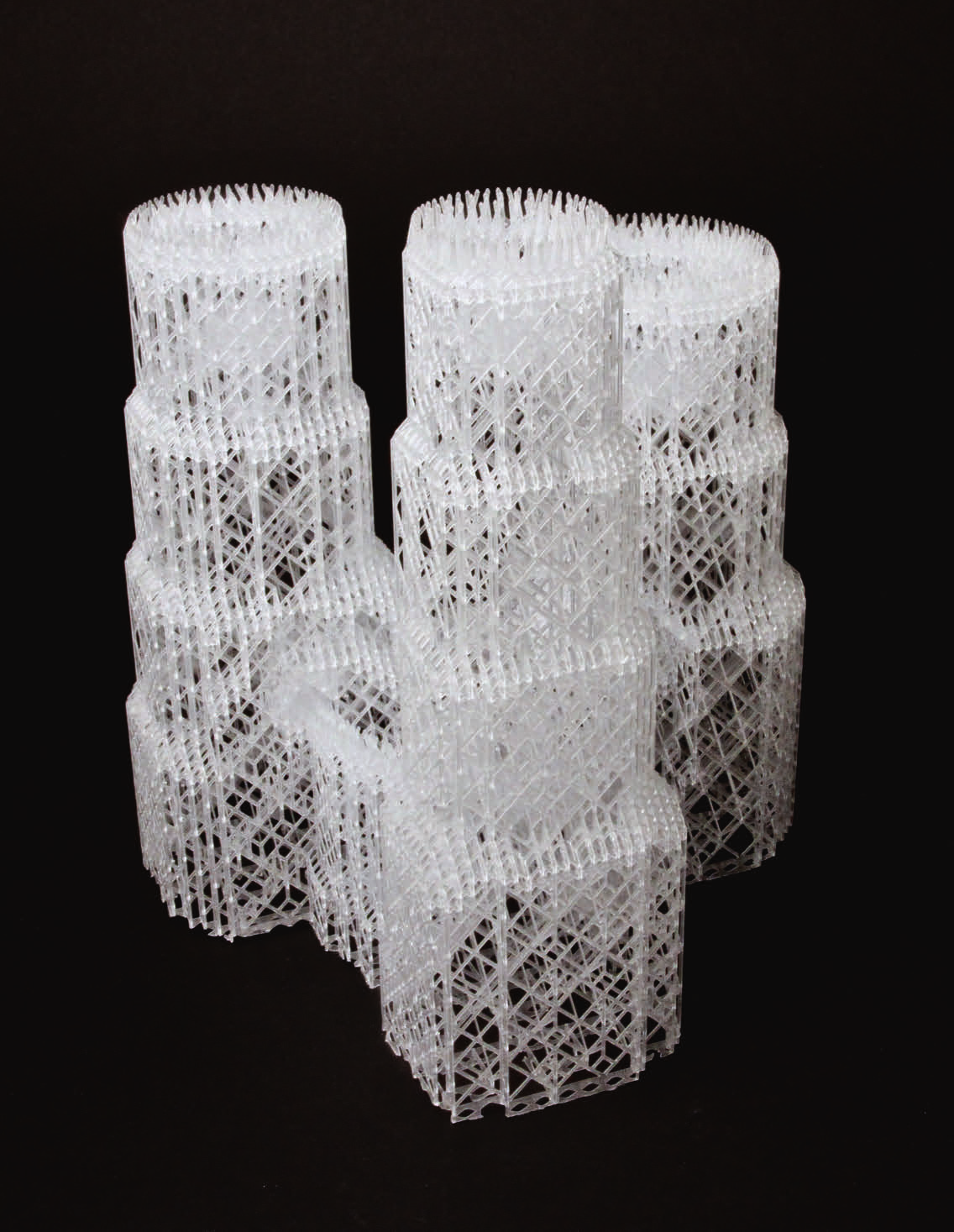
The project combines traditionally incompatible ceramics and glassworks using 3D printing technology. ‘The online community we set up around ceramic 3D printing was transferring knowledge in a very similar way to how crafts knowledge used to spread in the past: from master to apprentice,’ says Verbruggen. ‘In tight-knit groups such as the glassblower community, everybody knew exactly who invented a new technique and how it spread. Within online communities the process is similar.
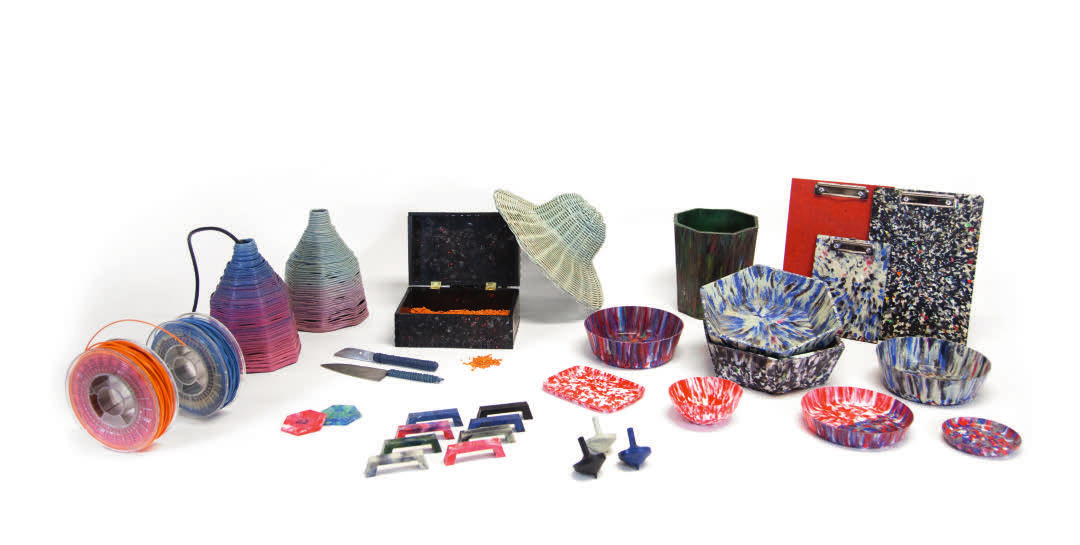
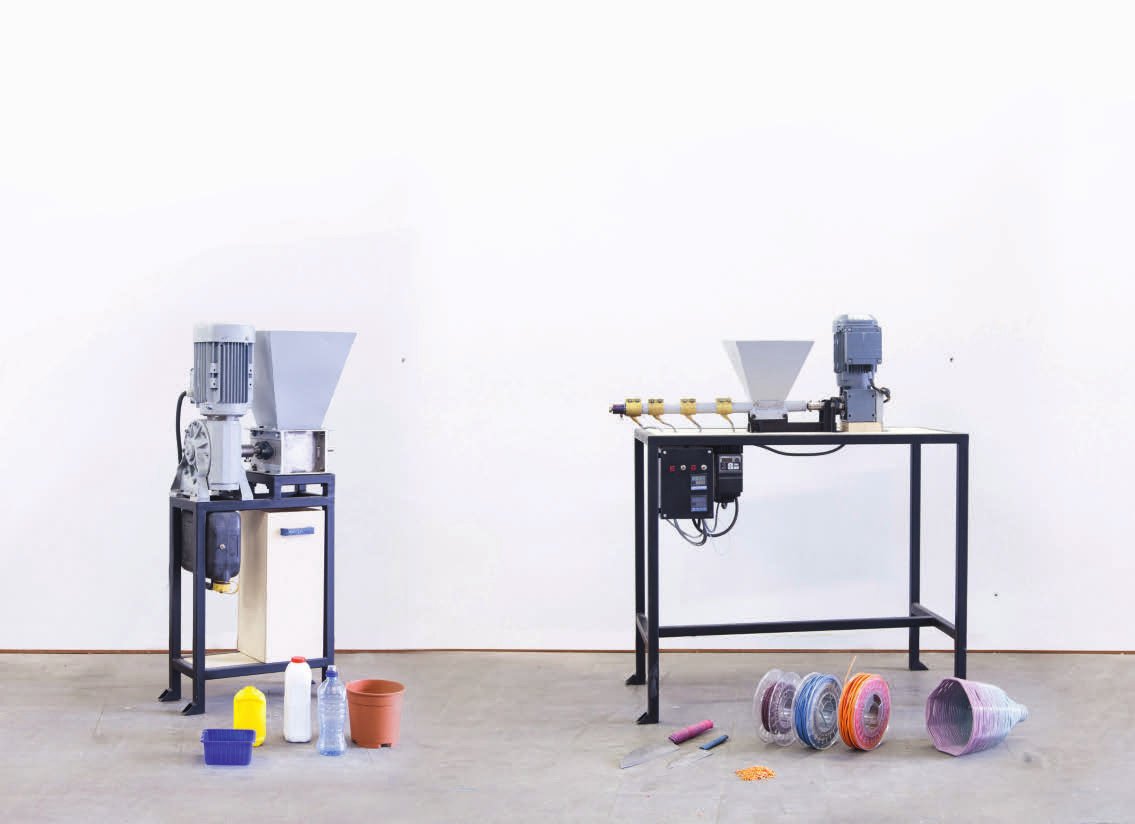
These unorganized structures of people are really involved with their community. They know exactly who is responsible for having introduced a certain kind of idea or a technique.’ Today, he adds, the local and the global cannot be disconnected. ‘The revival of local making has been made possible because of the global network that is augmenting it. It’s a perfect collaboration between the best of the local and the best of global.
